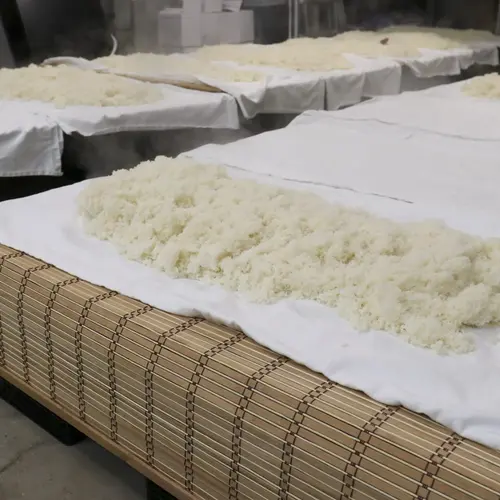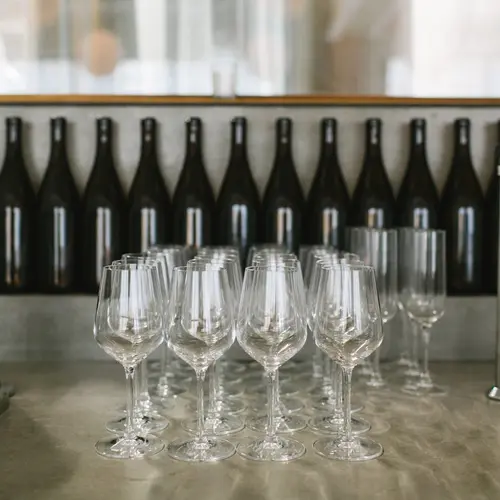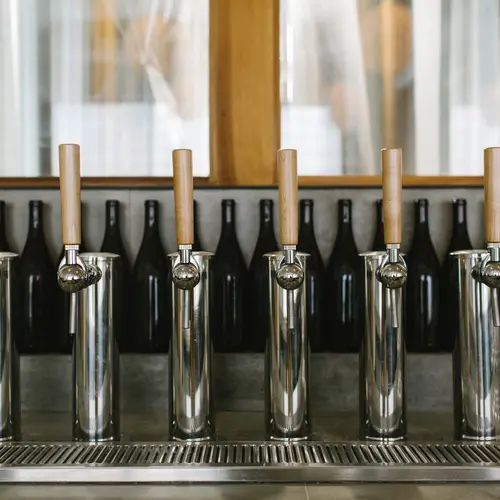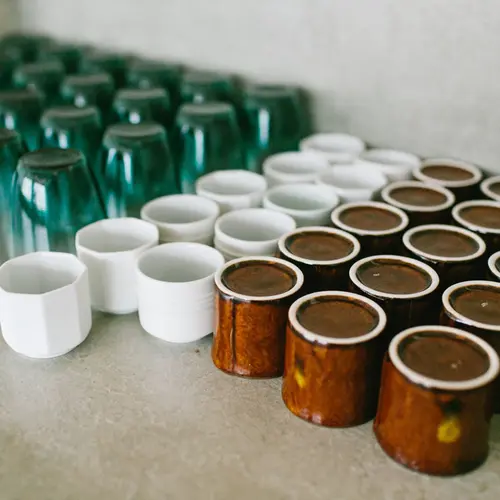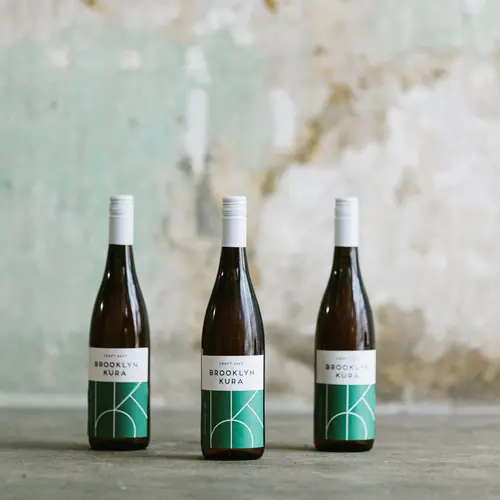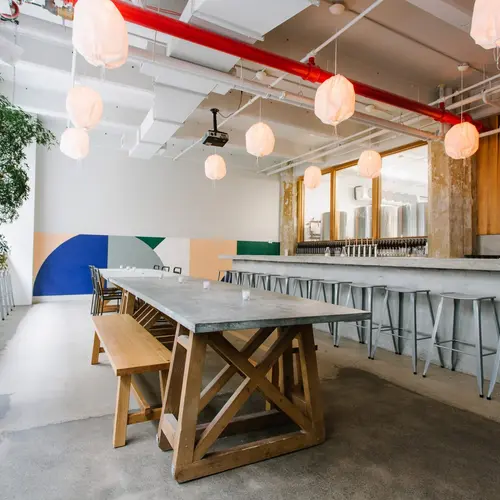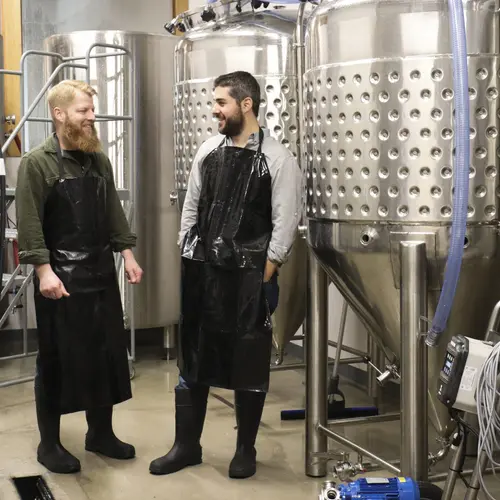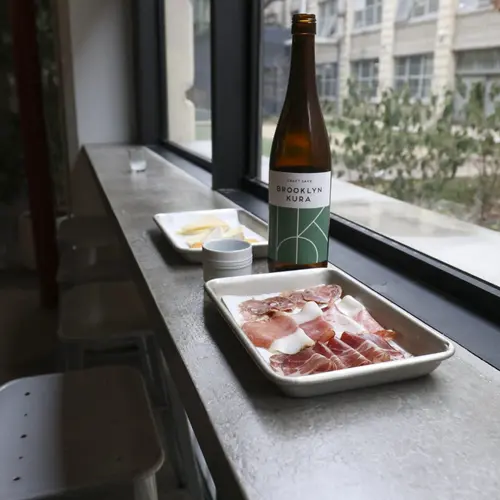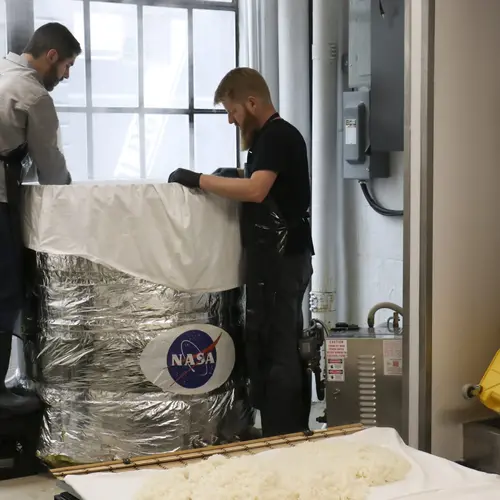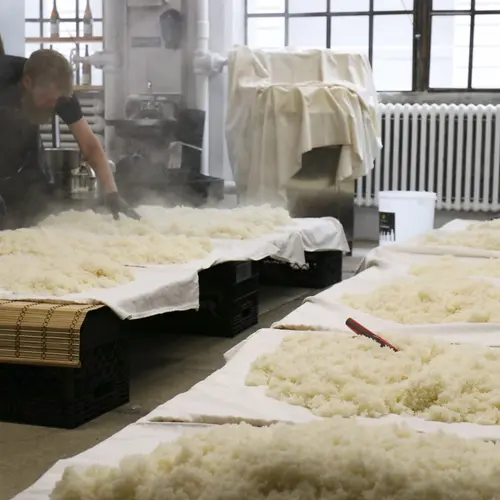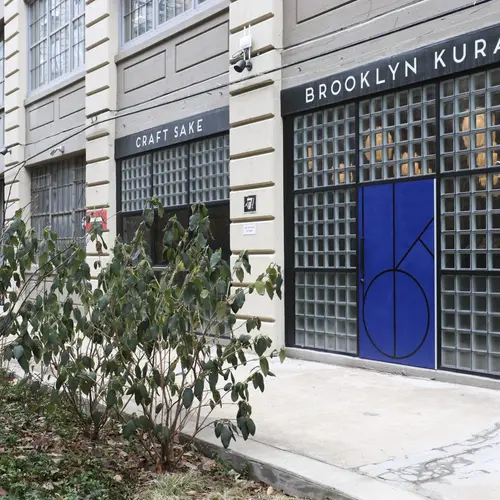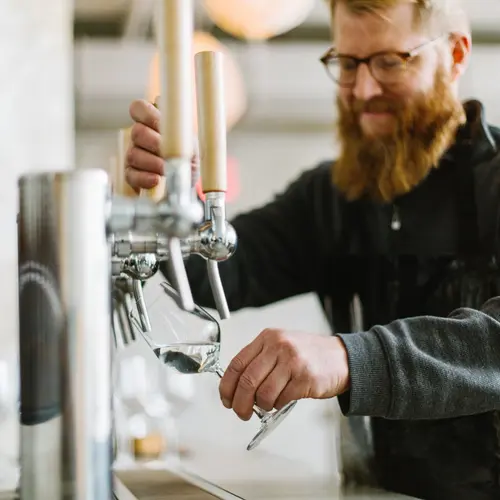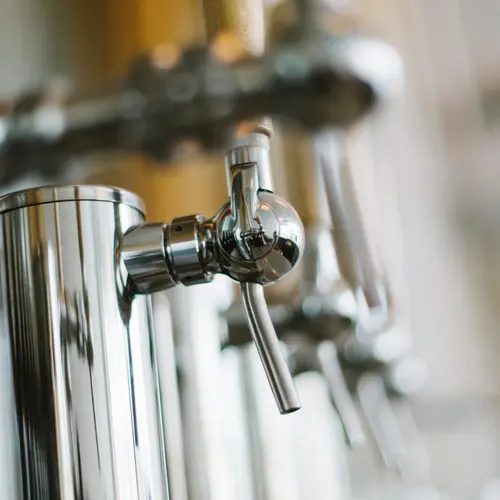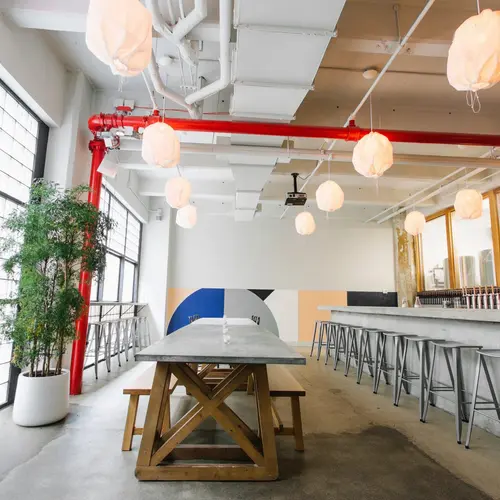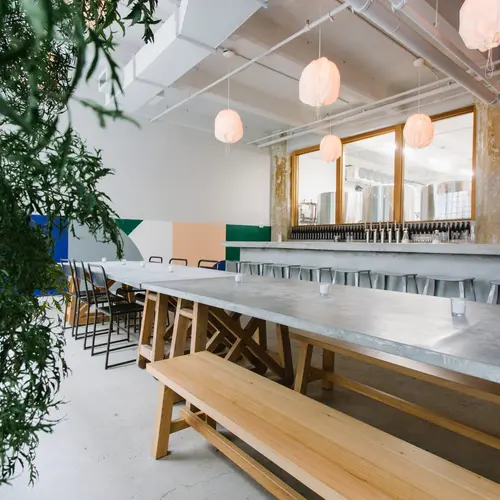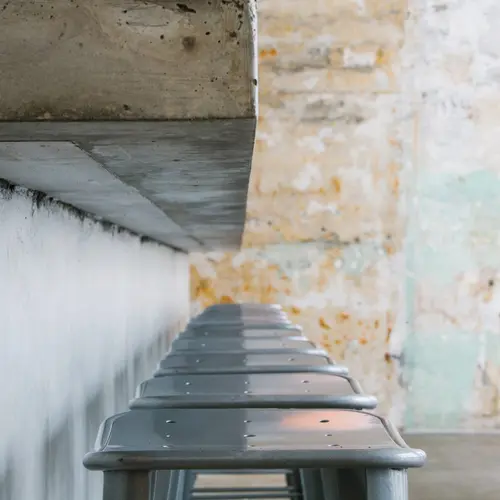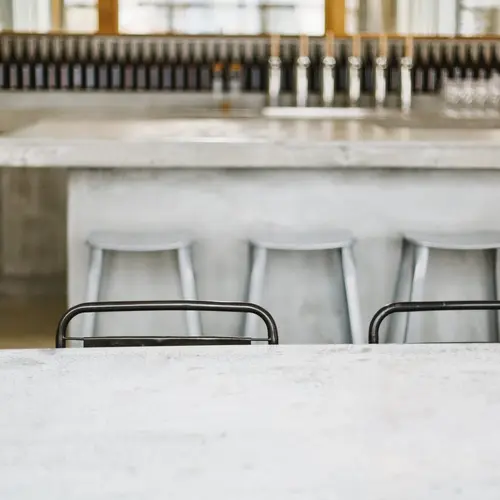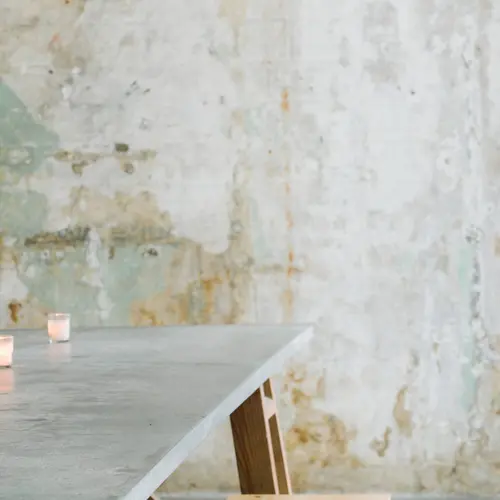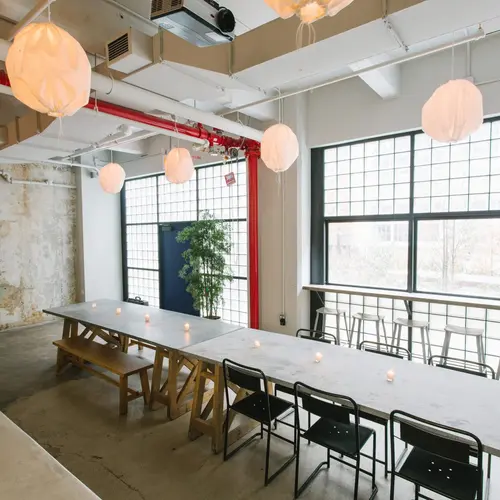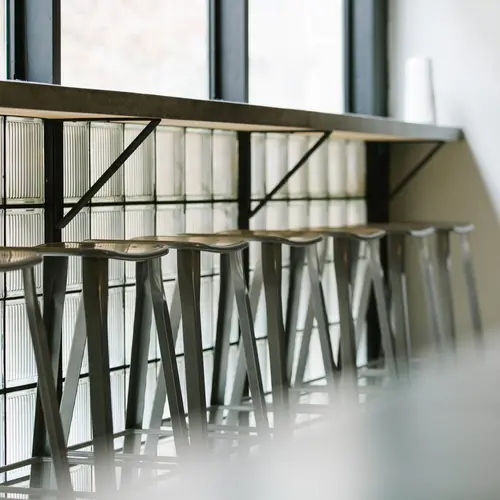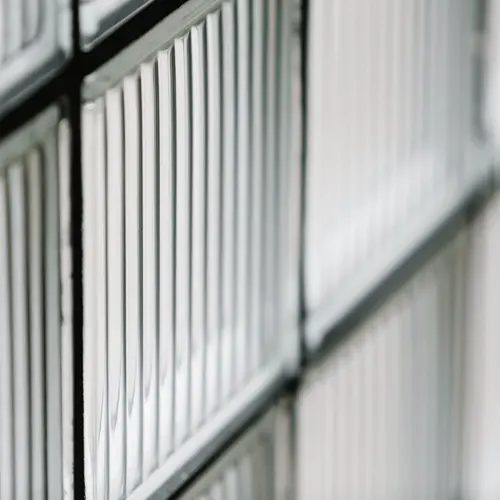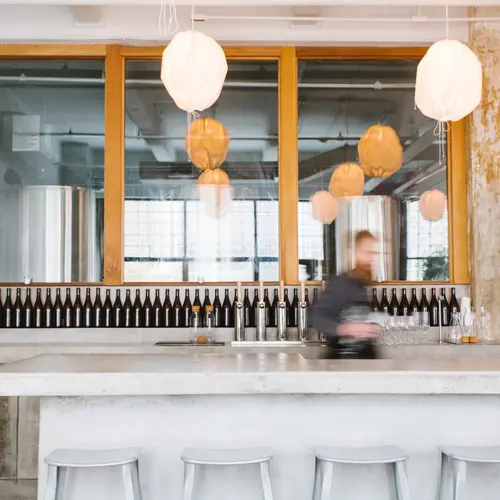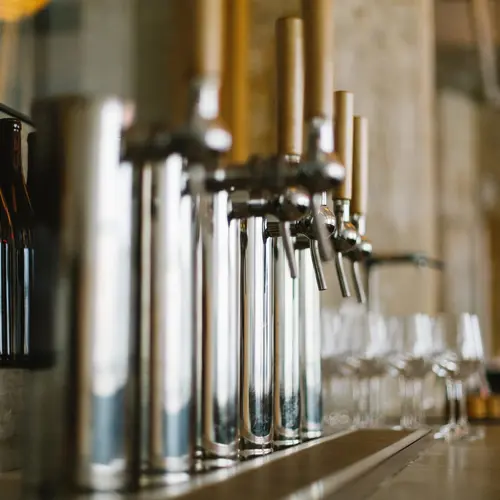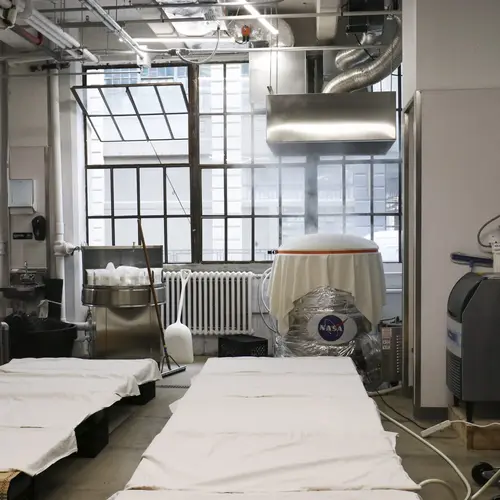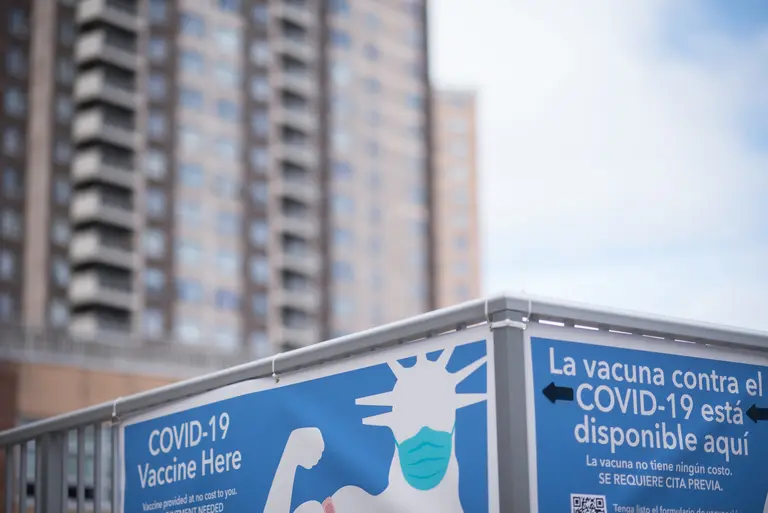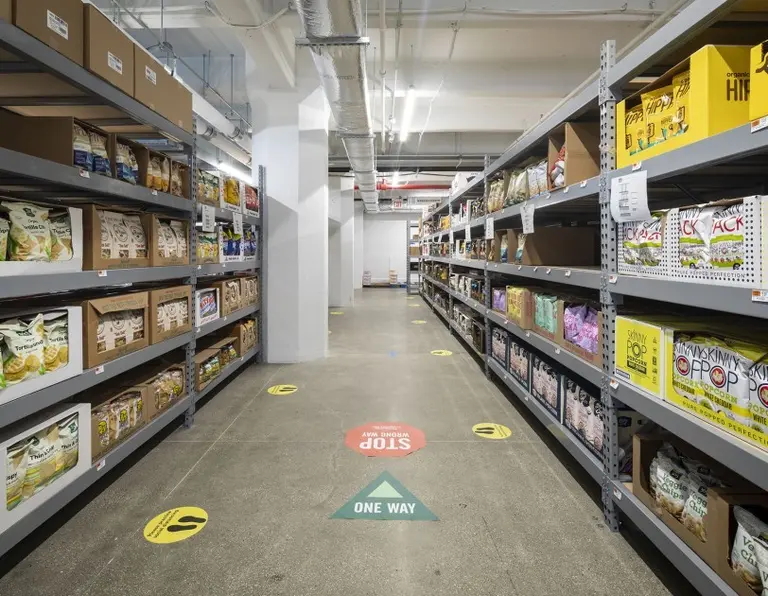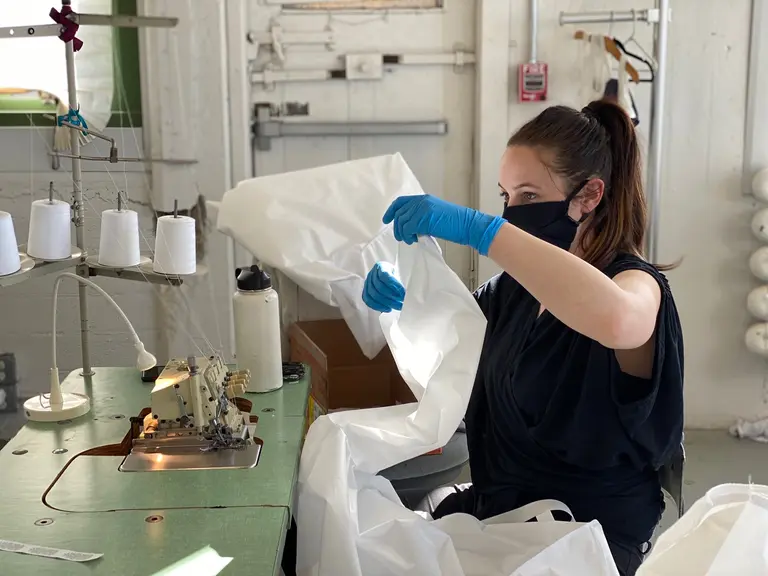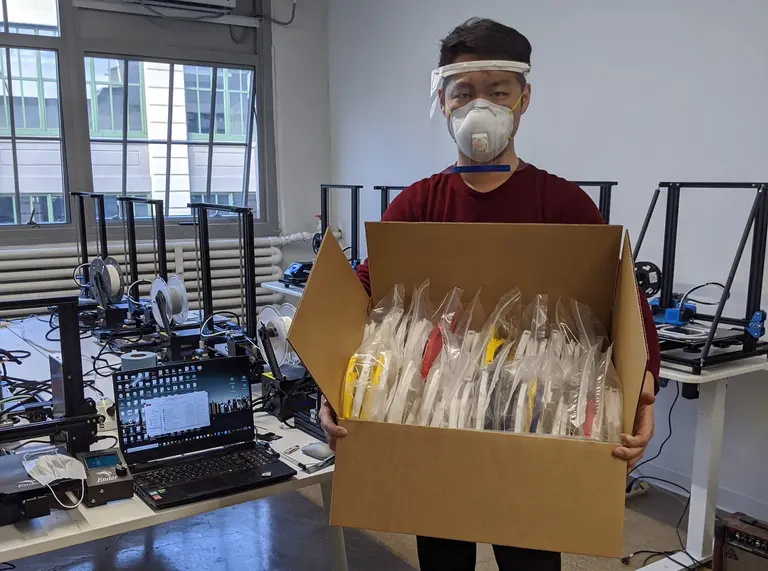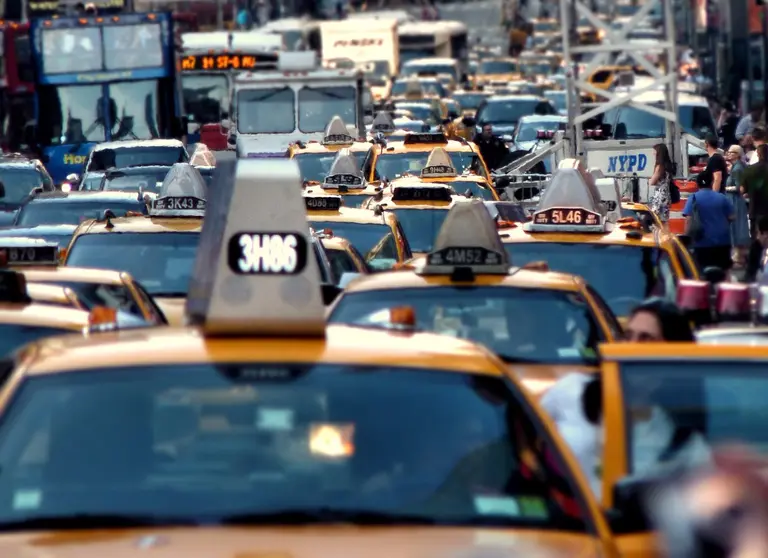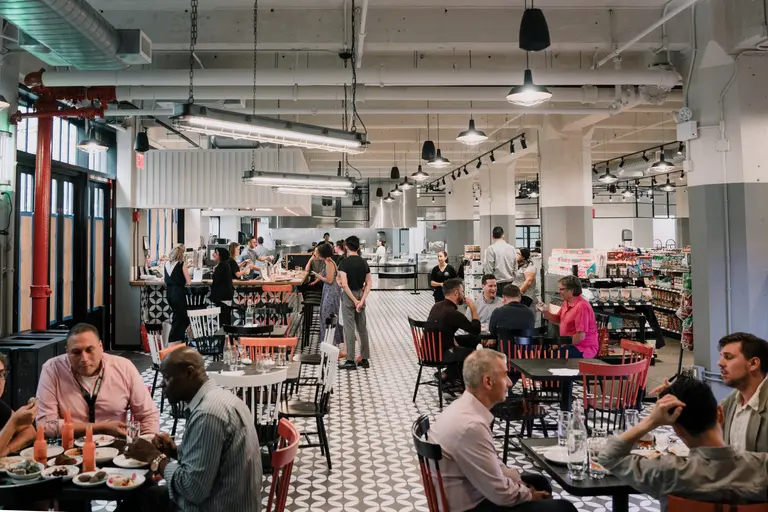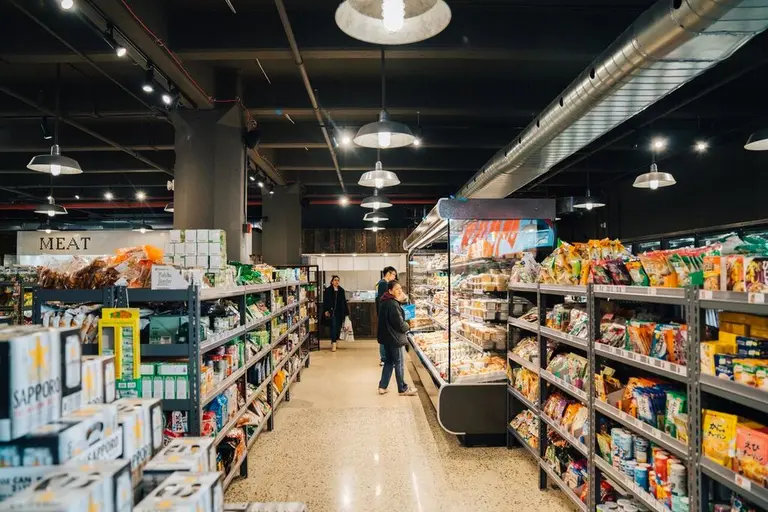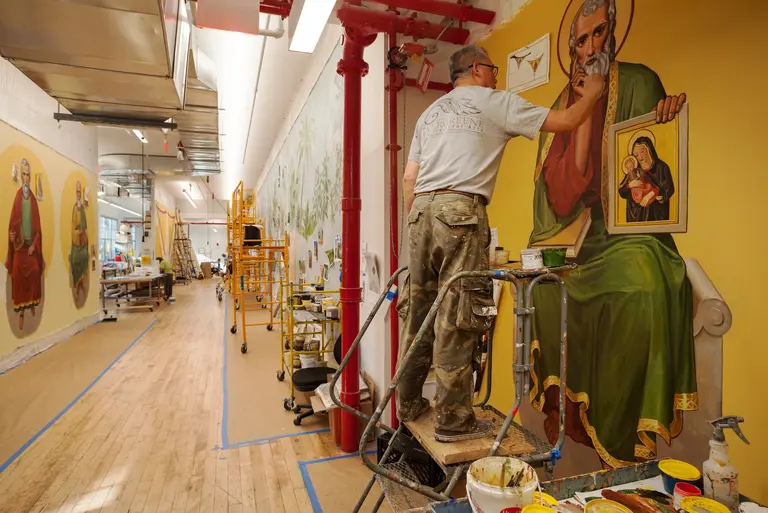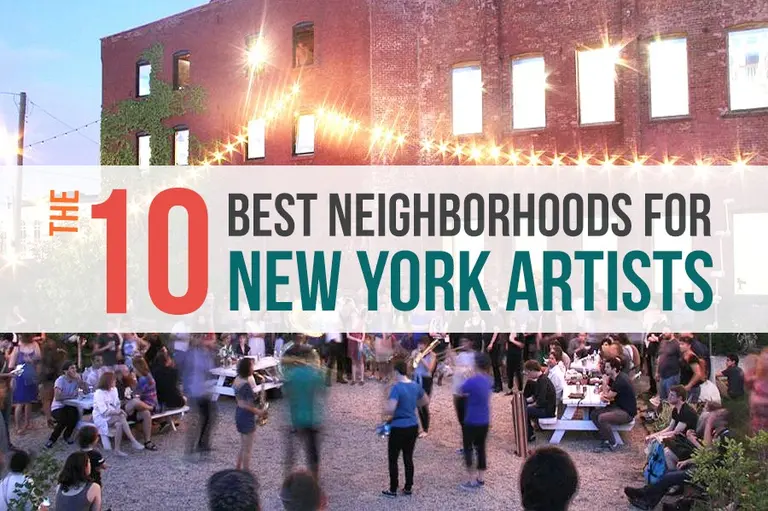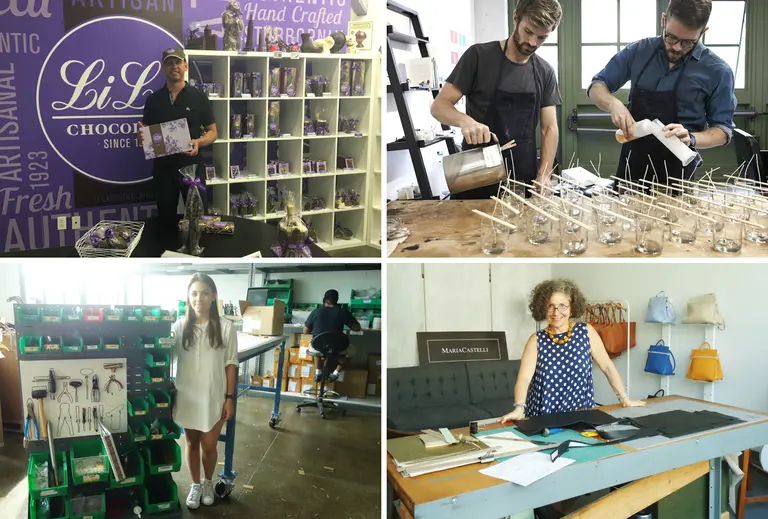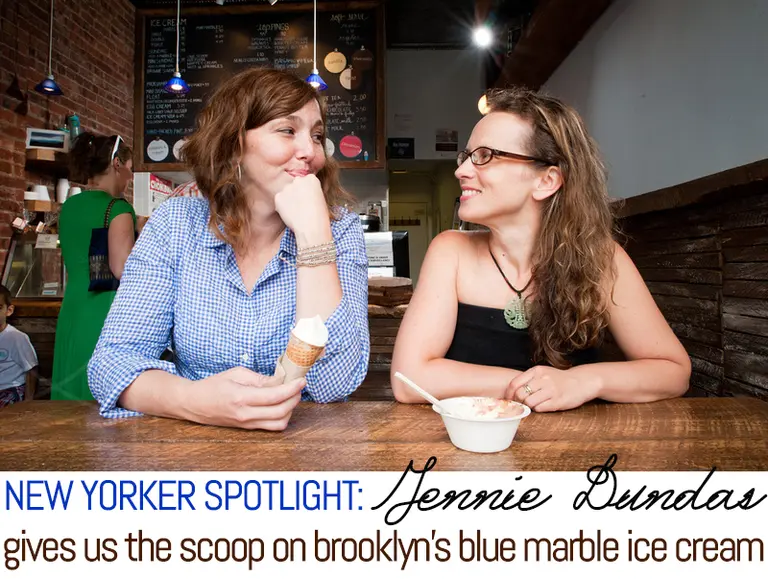Where I Work: Go inside NYC’s first sake brewery at Brooklyn Kura
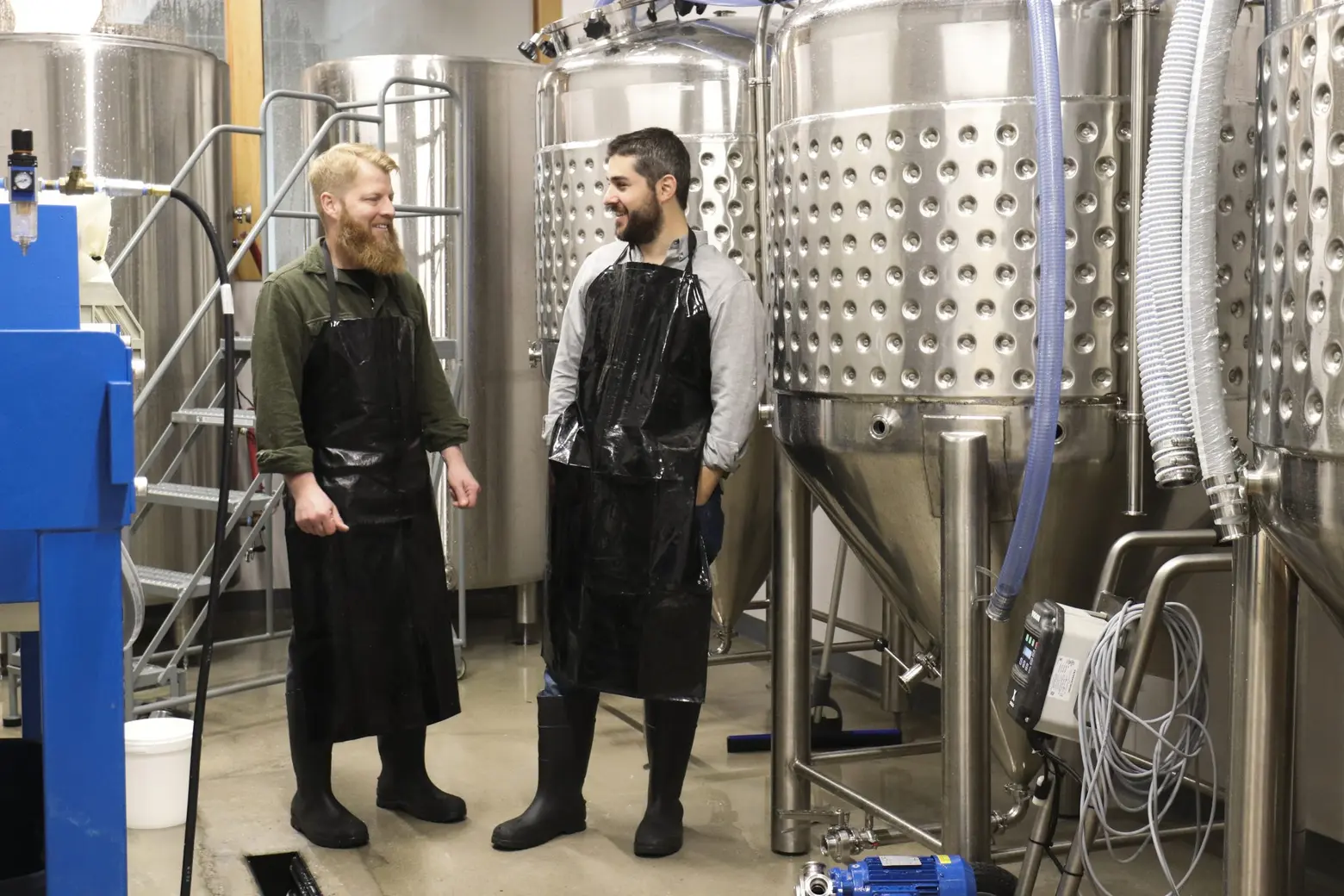
Brandon Doughan (left) and Brian Polen (right). Photo © Molly Tavoletti for Brooklyn Kura
6sqft’s series “Where I Work” takes us into the studios, offices, and businesses of New Yorkers across the city. In this installment, we’re touring Industry City’s Brooklyn Kura, New York’s first sake brewery. Want to see your business featured here? Get in touch!
“It was my first ‘oh, my God’ sake which was made in the U.S.A.” said Japanese-born sake sommelier Chizuko Niikawa-Helton when he tasted the product of Brooklyn Kura, NYC’s first sake brewery and one of only 15 in the nation. And this is exactly what co-founders Brian Polen and Brandon Doughan strive for. They’re committed to respecting the thousands-year-old Japanese sake brewing traditions, but they also hope to inspire a new interest in this ancient beverage by using unique American ingredients and engaging New Yorkers in the process at their Sunset Park brewery and tap room.
After meeting at a mutual friend’s wedding in Japan and developing a passion for sake, Brian and Brandon teamed up and got to work on their 2,500-square-foot space in Industry City, which combines the functionality of traditional Japanese breweries with a contemporary Brooklyn design aesthetic. 6sqft recently paid them a visit and had a drink in the tap room (yes, we agree with Niikawa-Helton that the sakes are “so soft, so gentle”), got a look at the sake making process, and chatted with Brian and Brandon about their journey, life at Industry City, and how they’re turning New Yorkers into sake lovers.
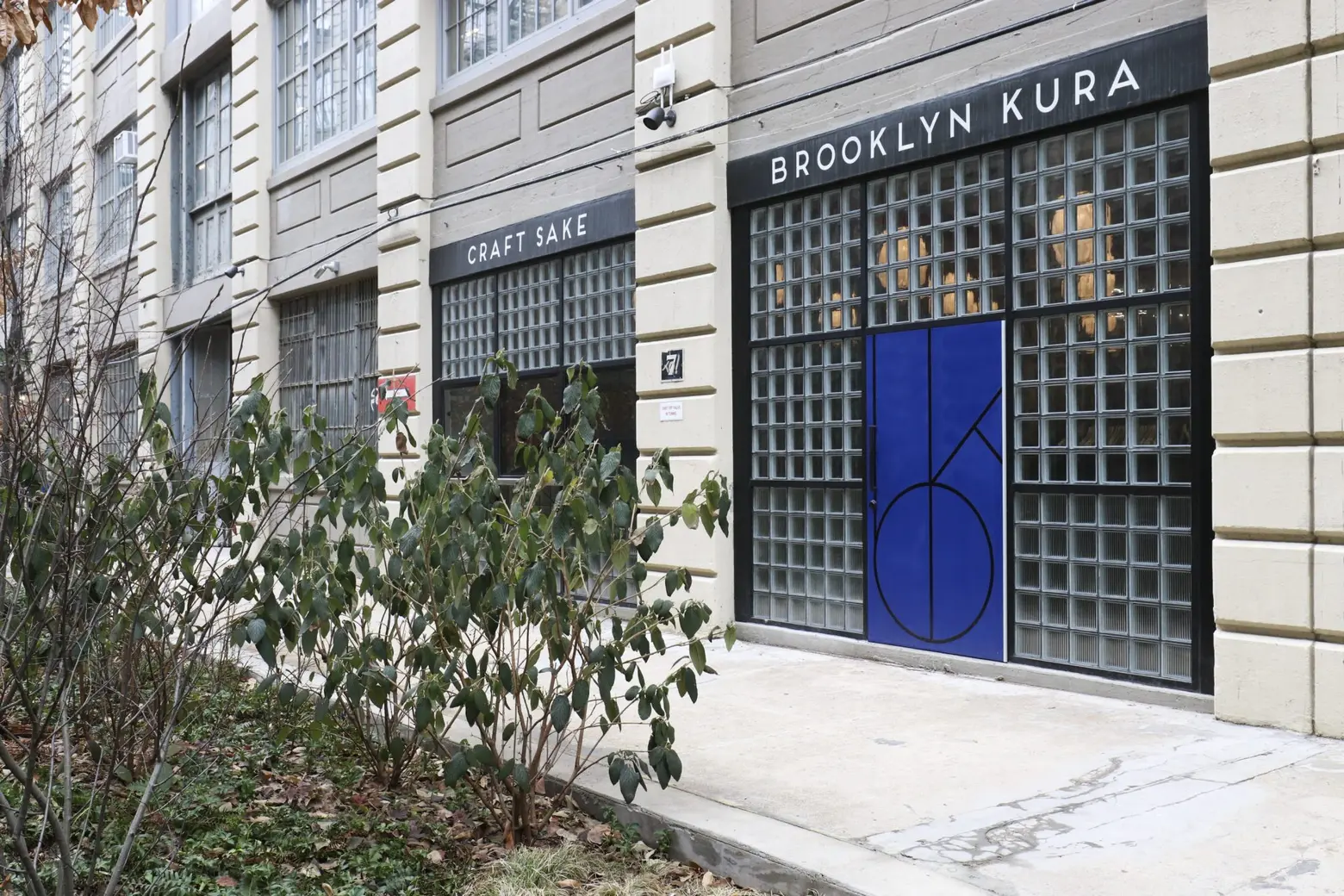 Photo © Molly Tavoletti for Brooklyn Kura
Photo © Molly Tavoletti for Brooklyn Kura
How did you two meet and start Brooklyn Kura?
Brian: I worked for a number of years in lower Manhattan for American Express in their product and technology organization. Brandon has roots in research and was working for the Knight Cardiovascular Institute in Portland doing cardio and cancer research. We met in 2013 in Japan at a mutual friend’s wedding. It was pretty lucky. We were traveling around the country to different places – Tokyo, Kyoto, Takayama – and we were drinking sake of a quality, complexity, and affordability that we hadn’t had exposure to. Brandon, being a biochemist and being able to ferment essentially anything, started talking with me about making sake at home.
So we went home to our respective states. Brandon went to Portland, and I moved into Brooklyn, and we started making sake. It was really interesting, kind of bizarre, and wonderful.
What solidified for you that you wanted to start your own business?
Brandon: New York is the largest sake consuming spot in the United States. One of the concerns I had, coming from Portland where we have really pristine water, was that going to the largest city in the country we’d need to heavily filter and treat the water. But I found out how great Brooklyn’s water is, so we very minimally treat it.
Brian: When we started making sake in our home, the quality was better than we expected. We really didn’t make the decision to leave our jobs until September of 2016. When Brandon moved out here, we quickly got a small space at the old Pfizer facility in Bushwick. The growth there was pretty simple. First, let’s figure out how to scale sake recipes. Second, let’s figure out all the business components: What’s our marketing and branding strategy? What regulatory hurdles do we have to clear? What does our supply chain look like? What equipment do we need and from where do we get it? How do we get investors on board and appropriately scale our capital base?
And then in June of 2017, we started construction at Industry City. In December, we started our first commercial production and sold our first bottle on January 7th of this year. Our taproom opened in February. As you can imagine, practical challenges abound but it’s been pretty fun.
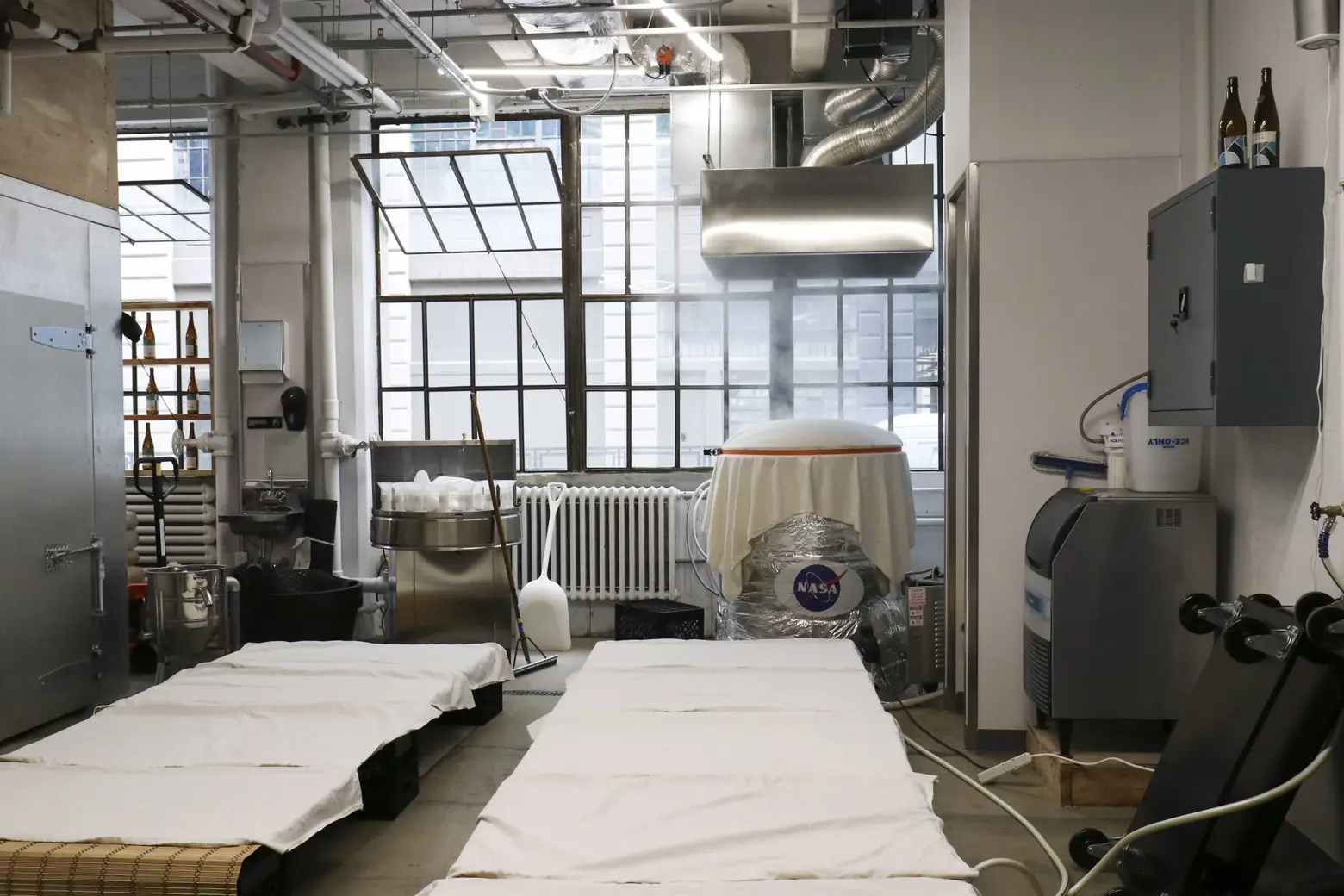
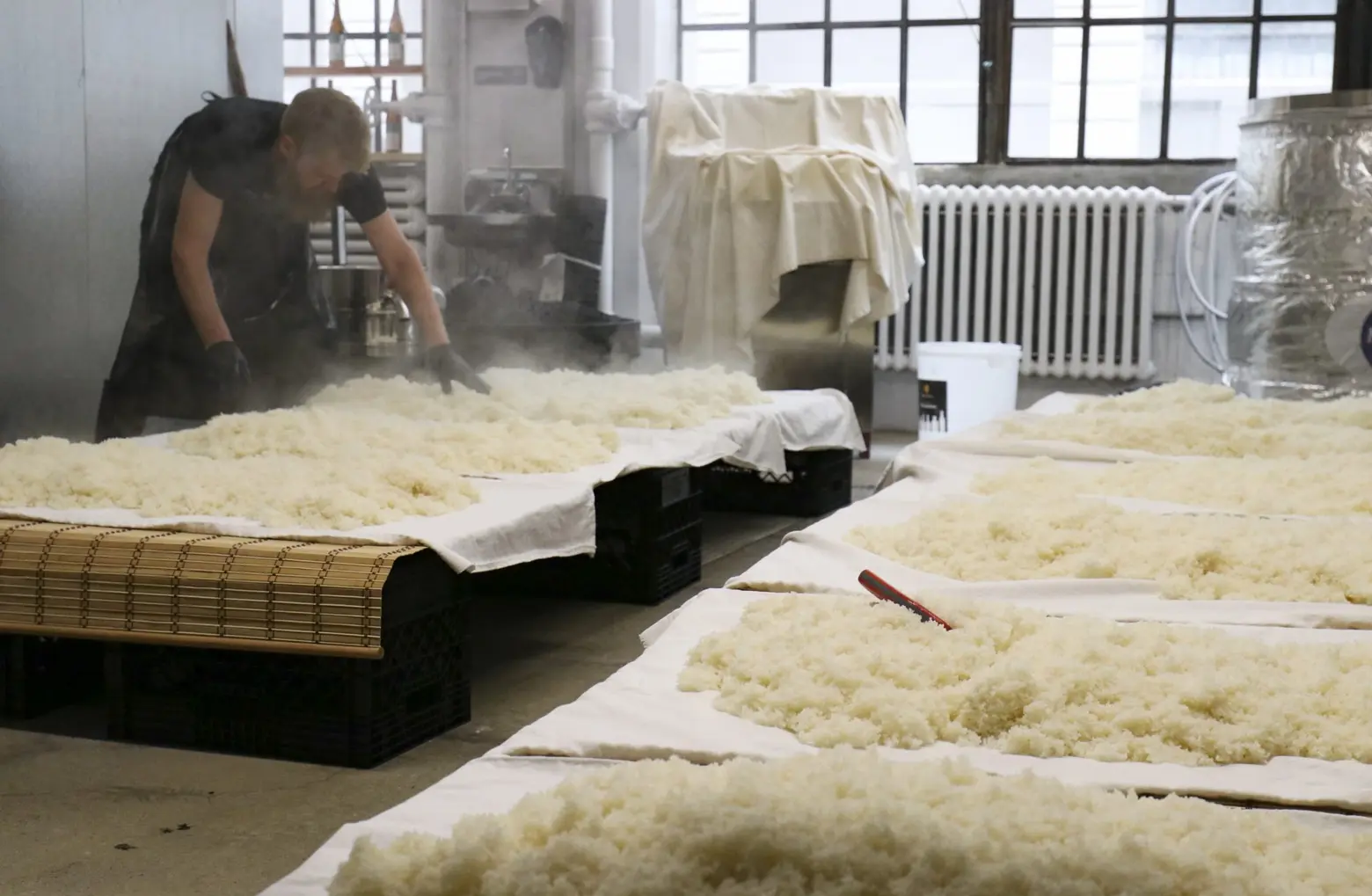 Photos © Molly Tavoletti for Brooklyn Kura
Photos © Molly Tavoletti for Brooklyn Kura
Can you give us a brief overview of the sake-making process?
Brian: The simplest way to describe our sake is that we make a pure rice sake. It’s called a Junmai sake and essentially there are four ingredients – rice, which we get from Arkansas and California, delicious Brooklyn water, yeast, and koji. Koji is an interesting Asian ingredient that brings sugar to the fermentation. Sugar is essential for the yeast to consume and produce alcohol. Those four ingredients are brought together through a pretty elaborate processor to ferment at cold temperatures for upwards of 30 days.
You can generally say the quality of sake is a function of how cold and slow the fermentation process is. You want the yeast to struggle a little bit and then it produces some of those delicate aromas and flavors that people associate with good sake. After the fermentation, we separate any residual rice or koji or solid from the clear sake and that clear sake goes through some additional treatment to stabilize it before packaging.
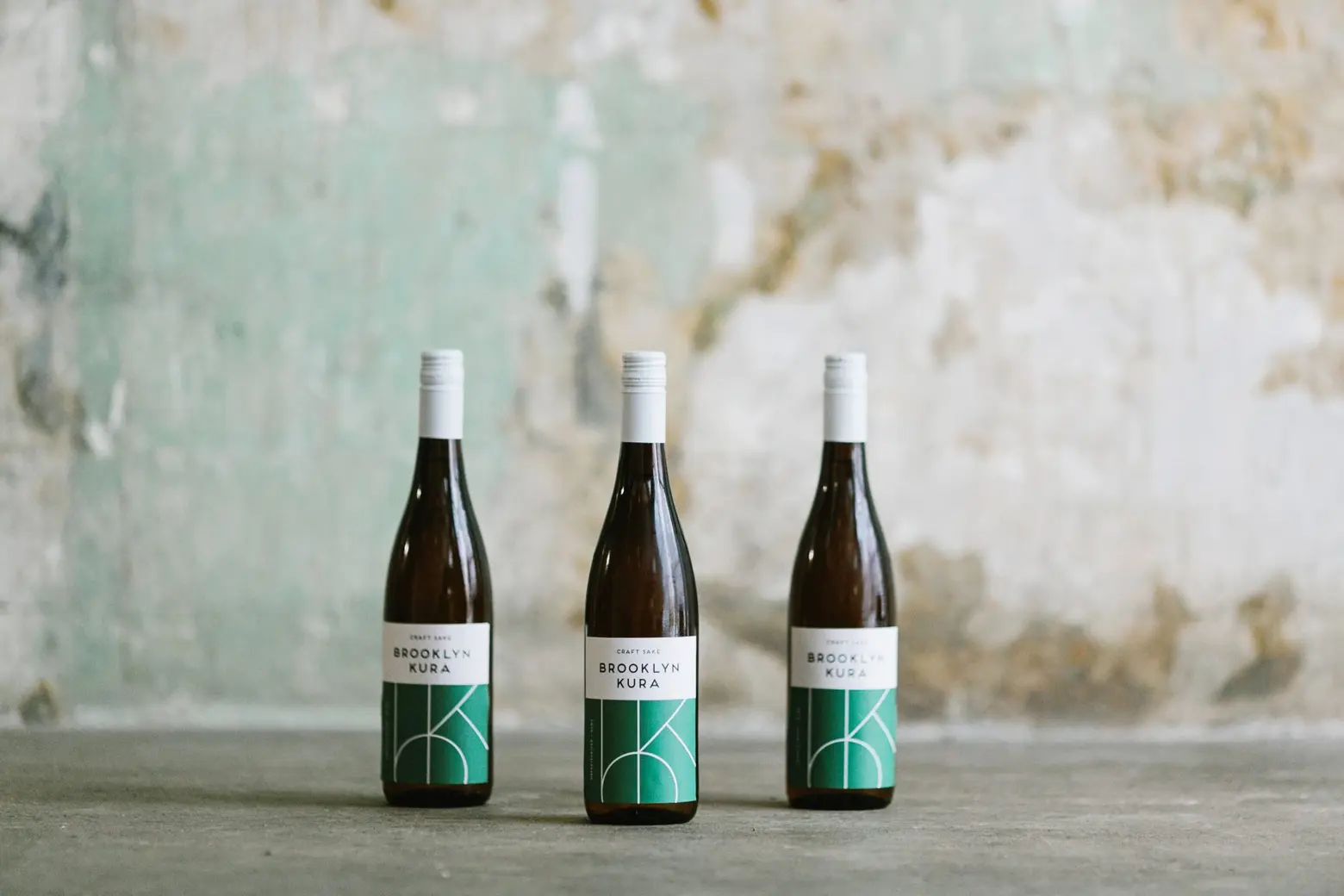 Photo © CHAR co. for Brooklyn Kura
Photo © CHAR co. for Brooklyn Kura
Brandon: Right now we serve Nama sake, which is very different than the sake you find in a bottle in that Nama is unpasteurized. Most sake you see on the store shelf has been pasteurized once or twice and that gives it the ability to store for a while at room temperature. It also alters the taste and aroma. So Nama sake is as fresh as you can get and that’s a benefit New York City has with us being here, that we can transport that cold in a reasonable amount of time so that people can enjoy fresh unpasteurized sake.
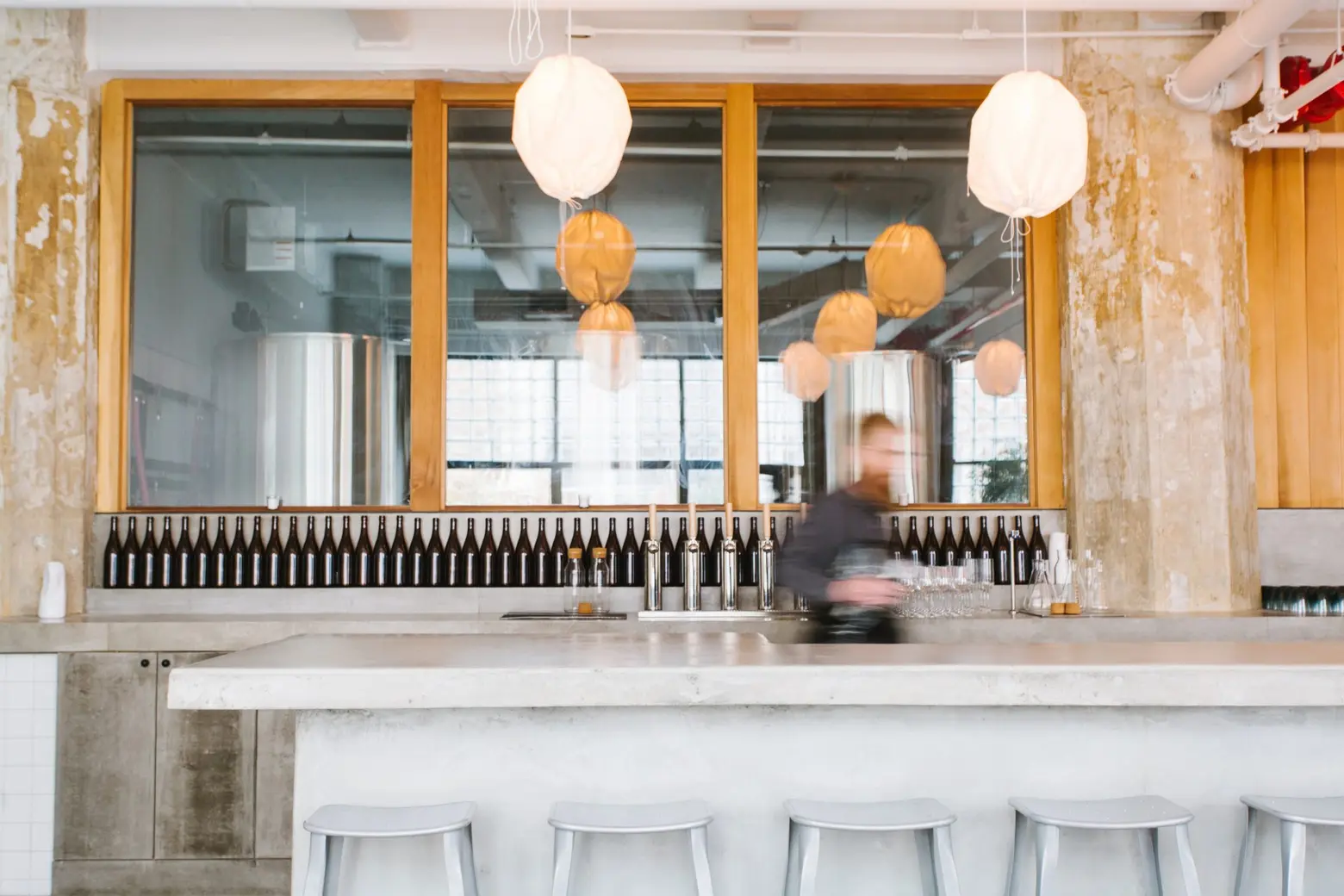 Photo © CHAR co. for Brooklyn Kura
Photo © CHAR co. for Brooklyn Kura
How does your process compare to the ancient techniques and recipes used in Japan?
Brandon: We spent a little time at different breweries in Japan. We want to learn as much as we can, but at the same time, we’re not claiming to make authentic traditional Japanese sake. We’re using American ingredients and Brooklyn water. But at the same time, we’ve built a huge network of sake enthusiasts and sake brewers in Japan who we can answer technical questions and who regularly come out and visit us.
Sake has been on the decline in popularity in Japan because the craft here didn’t become more popular. So I think the sake producers there see other people outside really getting into it. They see how it’s going to help everybody.
Brian: To that point, we recently had 11 breweries come to pour their sake in out taproom side by side with us. There needs to be a collaborative effort to educate and motivate more sake consumers and, as a result, grow the pie in the U.S. which also benefits the Japanese sake industry.
 Photo © CHAR co. for Brooklyn Kura
Photo © CHAR co. for Brooklyn Kura
Americans historically haven’t been too up on sake. Do you see this changing?
Brandon: The average beer drinker in the United States knows so much about beer compared to 20 years ago and they’re always looking for the next big thing. So one of the things we wanted to do is not have anything be confusing about sake. We limit a lot of the Japanese terms. Our brewery could pass as a beer brewery. We want to make it feel as familiar as possible, but at the same time we’re doing this subtle educational campaign. Every time we introduce something else on tap it’s an opportunity to teach about a particular aspect of sake.
Do you offer classes and for people who want to learn more or just get a tasting?
Brian: We do. We have educational collateral here. We regularly do private events that include tasting and tours. It’s really about giving people a place where they can come not just to learn about our sake but learn about sake in general.
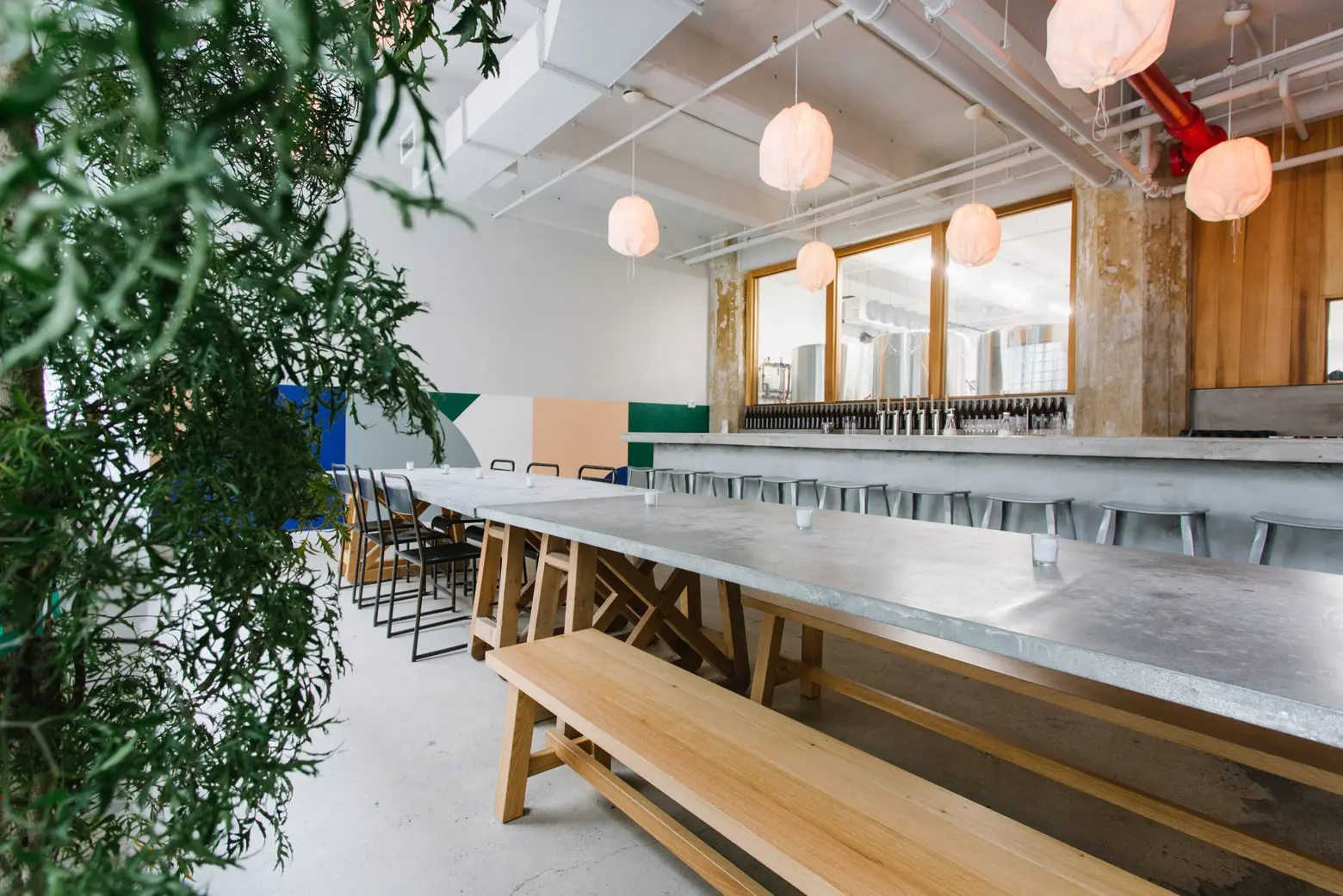 Photo © CHAR co. for Brooklyn Kura
Photo © CHAR co. for Brooklyn Kura
Let’s chat a bit about Industry City. Why was this the right fit?
Brian: Starting a brewery or manufacturing in general in New York City is relatively challenging. One of the mistakes I’ve seen is securing a lease in a place without the appropriate zoning to conduct the business. So we made a concerted effort to find a place where we could avoid those issues. When Industry City became an option, we spent six months getting to know the team there, sharing with them what our plans were, and giving them a sense of our potential. We quickly realized how much time and energy they’re investing in creating a community here with retailers and makers to complement their commercial spaces, so we signed on the dotted line.
Are you collaborating with any of the other tenants?
Brian: Now that we’re operating, it’s such a rich community. We can go to the folks at Brooklyn Brine and talk about distribution challenges and partnerships and collaborations. And then we can go to Industry City Distillery and talk to their crew. We also have marketers and advertisers and photographers that occupy the commercial spaces above us that are our patrons but also are enthusiastic about helping us become more successful. We’ve just had an incredible experience here and we think the folks at Jamestown have gone out of their way to support us.
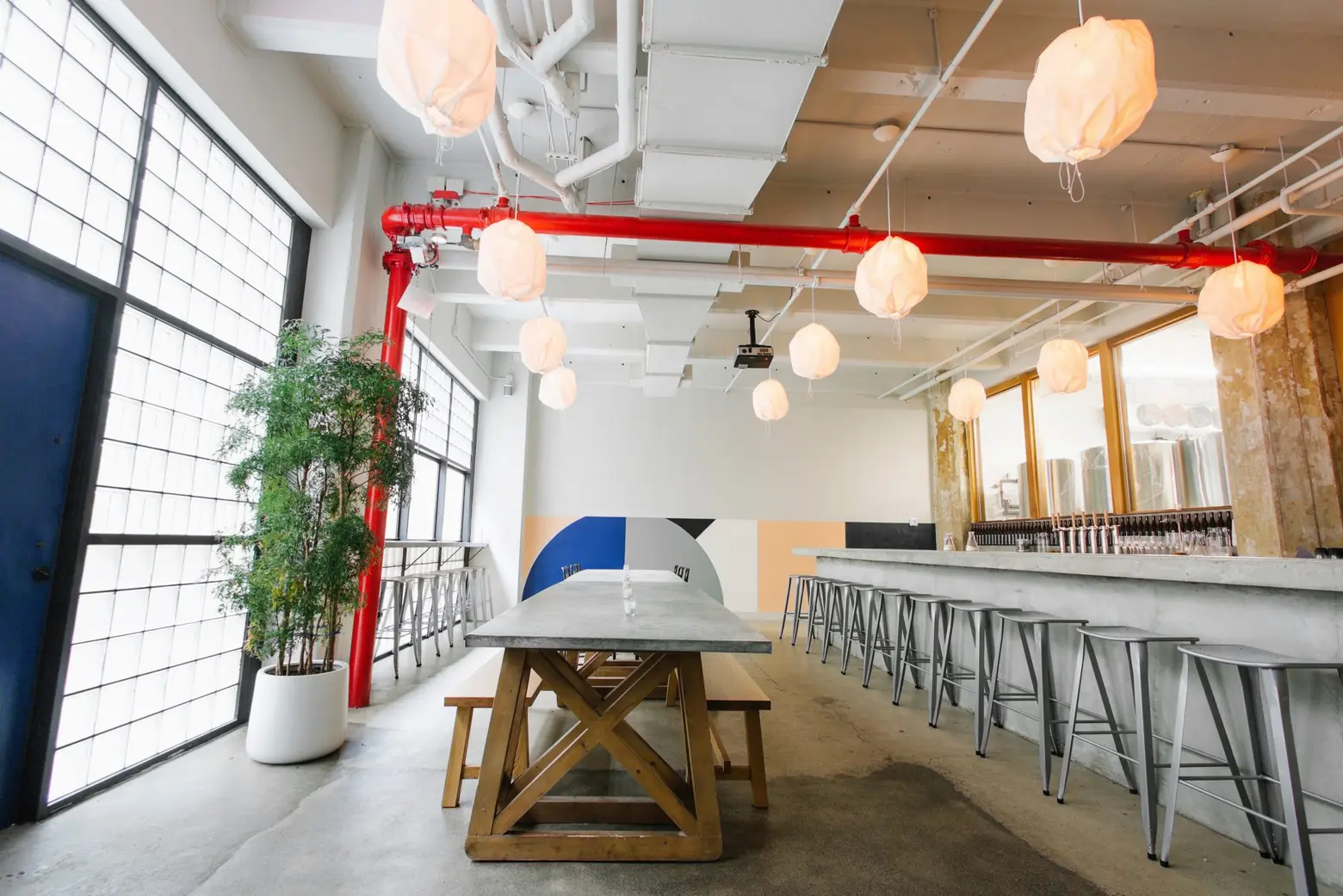 Photo © CHAR co. for Brooklyn Kura
Photo © CHAR co. for Brooklyn Kura
We recently wrote about a huge Japanese inspired food hall in Industry City. Do you know anything about that?
Brian: Yes; the owner/operator is Tony Yoshida. He owns a range of different restaurants in New York City and a market called Sunrise Mart in the East Village. He’s an incredibly talented, smart, forward-looking businessman. He and his family are building a 20,000-square-foot Japanese eatery, and we couldn’t be more excited. Anything that draws more people to Industry City to discover the many businesses that are operating here, including our own, is a big win for us. In addition, having a relationship with Tony Yoshida and his restaurant strengthens our position as we distribute in New York City with collaboration, partnership, different product placement, you name it.
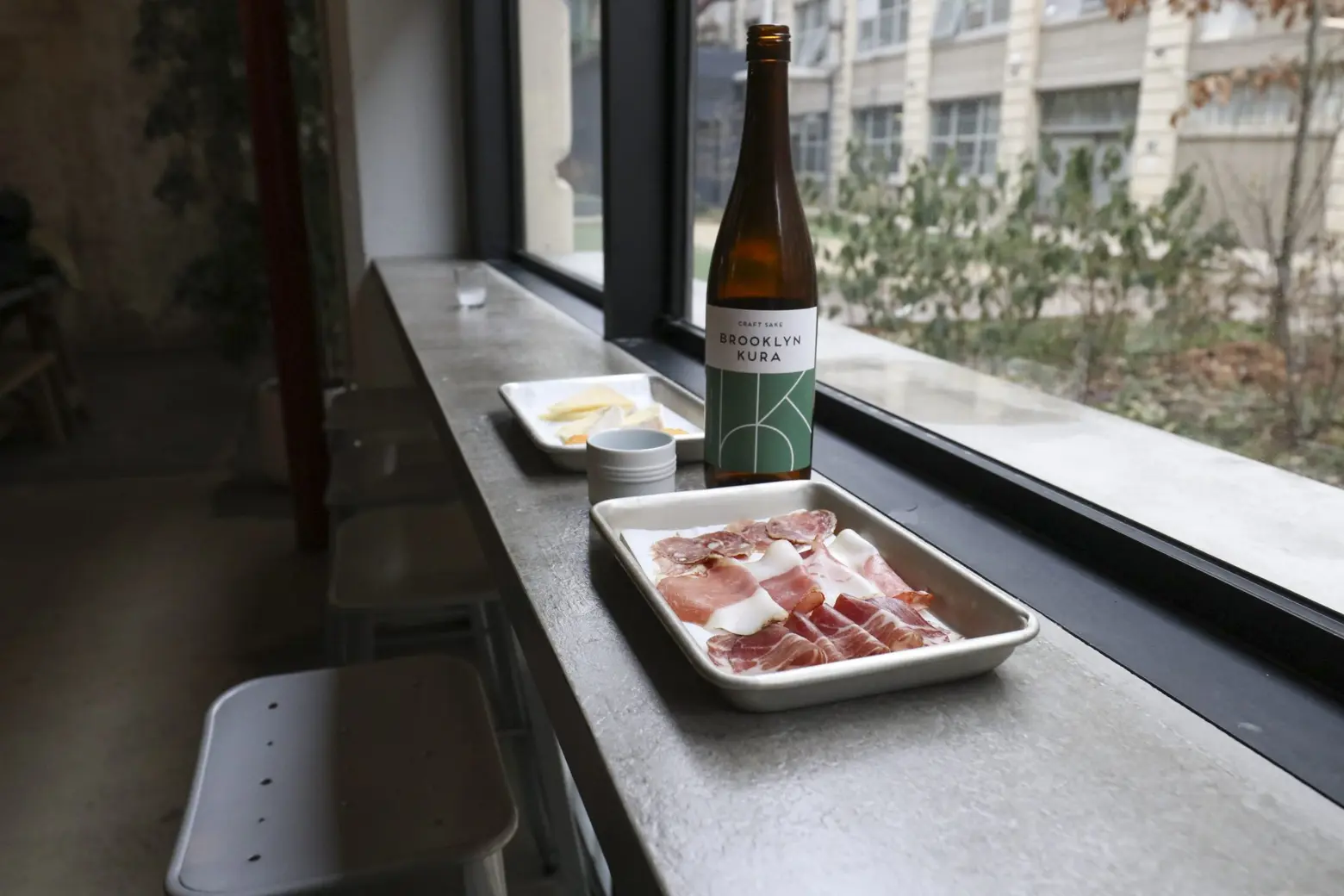 Photo © Molly Tavoletti for Brooklyn Kura
Photo © Molly Tavoletti for Brooklyn Kura
You mentioned distribution. Are you currently providing your sake to any restaurants in New York?
Brian: We’re in about 35 places. In order for us to support our goals, we need to continue to grow that distribution footprint. We’re in places like Astor Wines, Union Square Wines, and Decibel, which is perhaps the most well-known sake destination in New York City. Those areManhattan-based locations; we’re also increasingly selling at Brooklyn-based spots, which is really exciting. That includes both wine shops and liquor stores and also restaurants like YUJI Ramen, Shalom Japan, and Gold Star, which is one of our favorite beer bars in New York City that will rotate in and out kegs of our product.
In terms of food, sake is typically associated with Japanese food or sushi, but can it be paired with other cuisines as well?
Brandon: Among the educational hurdles we have is that the majority of Americans associate sake as a thing that they drink hot when they go get sushi. Oftentimes the reason it’s served hot is that it’s a lower grade table sake that doesn’t have much aromatic character to it. So heating it up pushes what little aroma there is out of the sake. Another thing people think is that it’s a distilled spirit. It’s served in a small glass traditionally just so that the host can be gracious and refill the guest’s glass frequently. That’s why we serve it in a wine glass. Sake goes really well with Japanese food but we are making an effort to expand the types of food partnerships we have well beyond that. We’d like to see people putting sake with a lamb burger or with Italian food.
Brian: To Brandon’s point, yes, sake pairs well with Japanese food, but Japanese food has a huge range from sashimi to curry. All of those have analogs in the American diet for folks who don’t enjoy Japanese food.
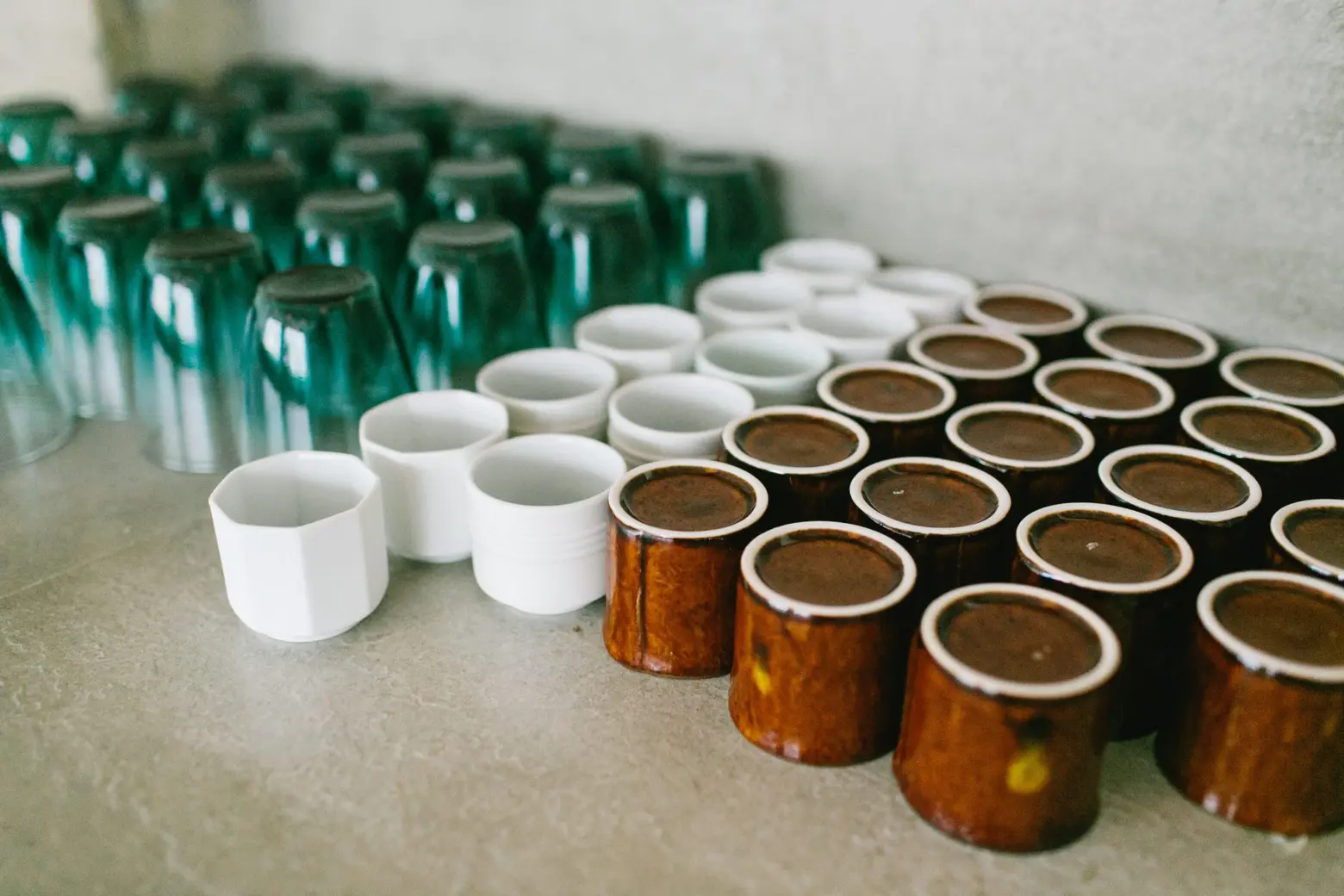 Photo © CHAR co. for Brooklyn Kura
Photo © CHAR co. for Brooklyn Kura
How about the design of the space; what kind of aesthetic you were going for?
Brian: We’re fortunate enough to have talented friends who we leaned on to introduce us to the folks at Carpenter & Mason, the company we worked with to design the taproom. First and foremost, it had to be affordable because we’re a startup. The second gets back to Brandon’s point that when you walk in here, you think it’s an upscale beer bar.
We have our sake on draft and serve it in wine glasses to aerate it and let people enjoy the color, aroma, and texture. We have communal tables and some outdoor seating all in an effort to make this a pretty comfortable community spot.
 Photo © Molly Tavoletti for Brooklyn Kura
Photo © Molly Tavoletti for Brooklyn Kura
In five years, where do you hope Brooklyn Kura will be?
Brian: Our goal is to make the best possible sake we can. We want it to be recognized as a sake that can stand next to some of the best in Japan. At the same time, we want sake to become more visible in America and have people understand that there’s not just sake, there’s a lot of variation and interesting things to learn.
Brandon: The product is paramount and we have the ambition to get our sake in a bunch of different historical sake serving places, as well as new places that are interested in a new category. We expect to be focused in the short term on New York City and then the New York metro area and then as we invest in greater capacity, we can think about expanding beyond. We’re four months in but we try to plan for 18 months out. It’s a tough question to answer other than it’s about the product and it’s about getting it out to as many people as we can.
RELATED:
